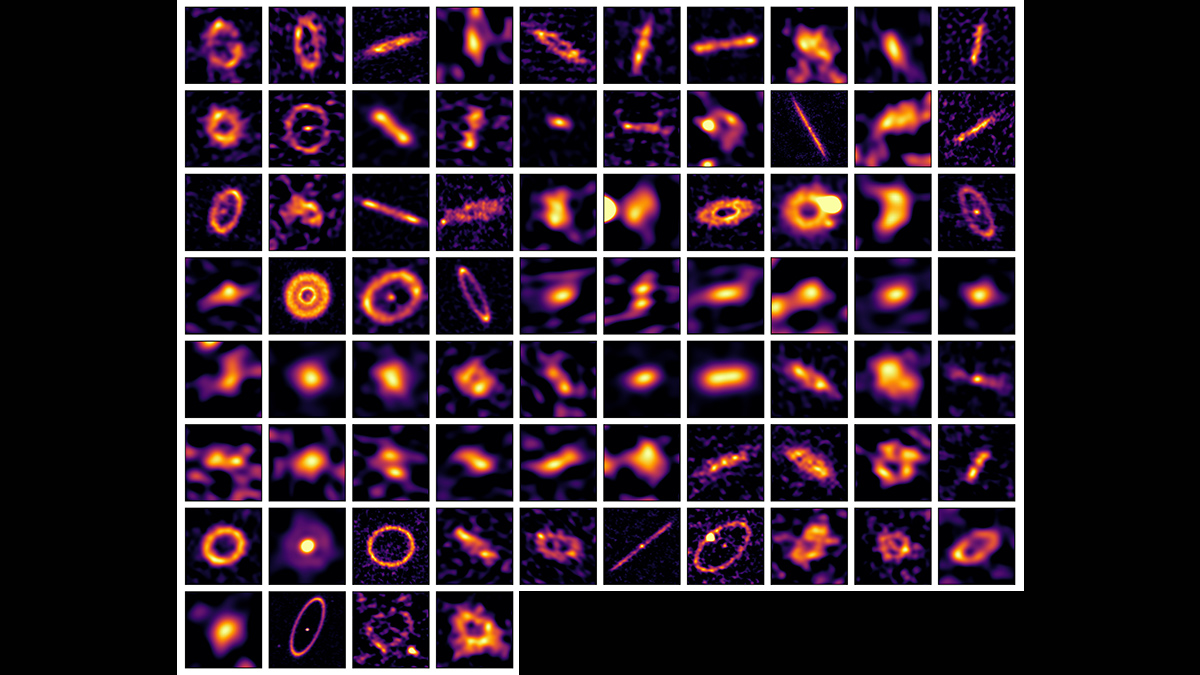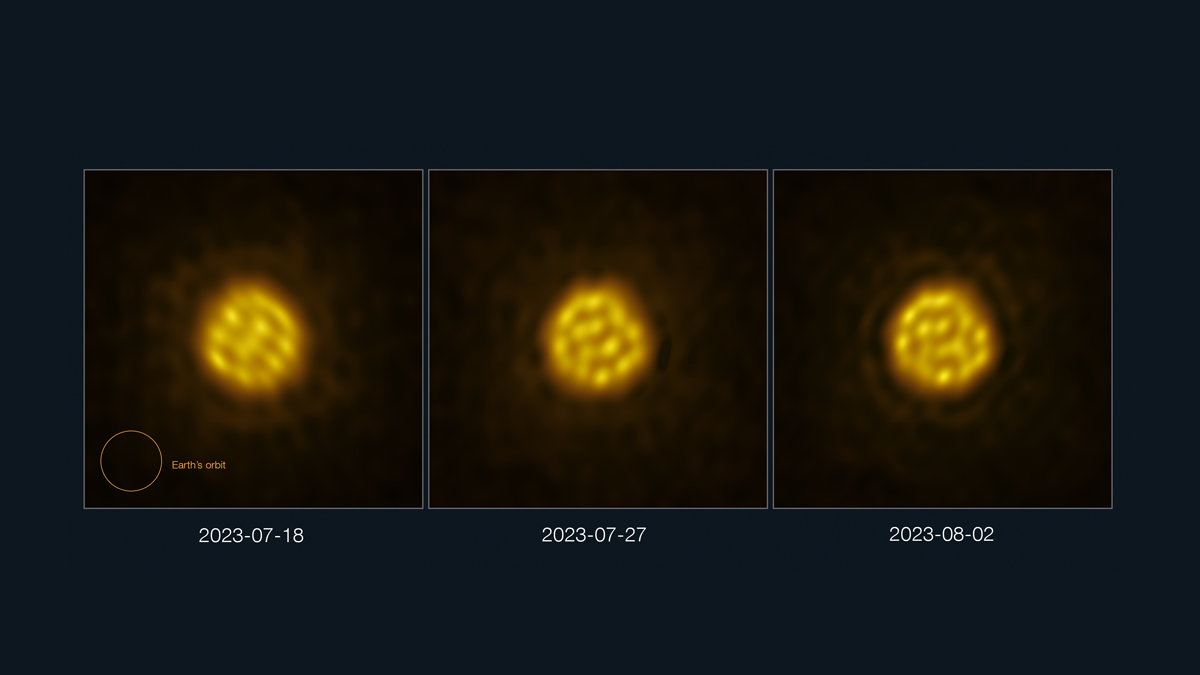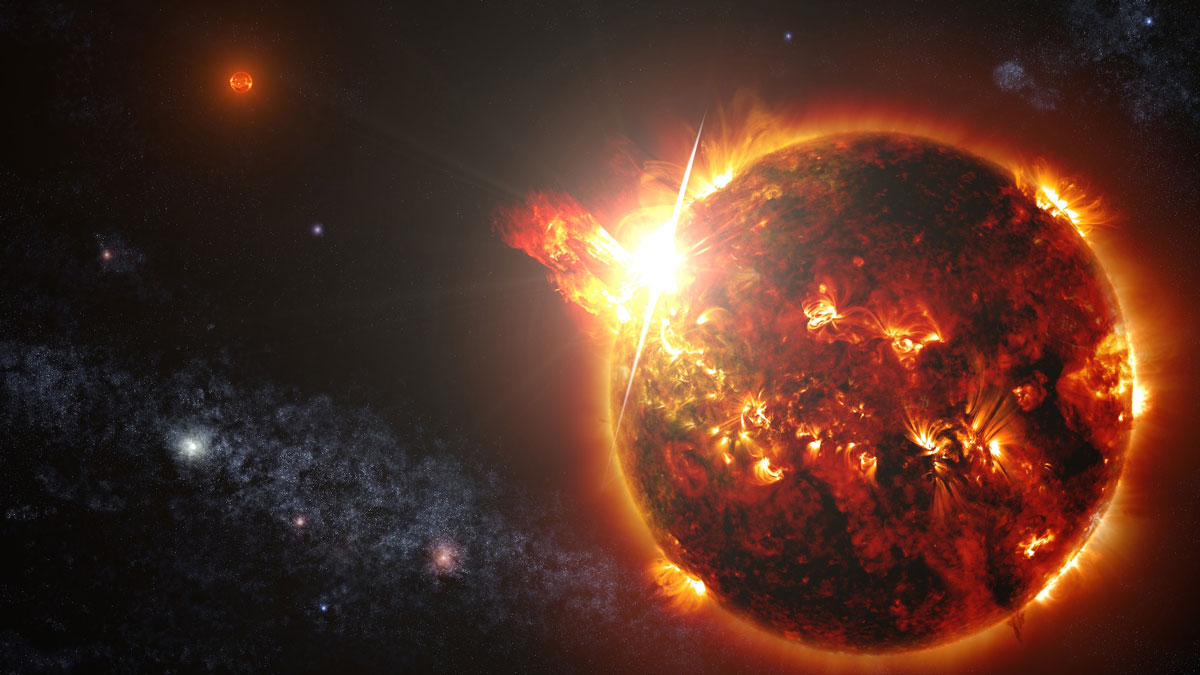Millimeter-wavelength observations of dust and pebbles in 74 star systems hint that planetary migrations might be more common than we realized.
stars
Earth May Survive the Sun’s Demise
A distant white dwarf hosts an Earth-like planet in an orbit that might be similar to Earth’s if it survives the Sun’s red giant phase.
ALMA Watches the Surface of a Star “Boil”
Observations of R Doradus, a nearby red giant, provide the first timescale for convection on the surface of any star other than the Sun.
Small Stars Produce Mighty UV Flares
Stronger-than-expected ultraviolet flares could either provide exoplanets the sparks of life or prevent them from having life at all.
Anemic Stars Don’t Host Super-Earths
Planetary systems need the right stuff to make planets, and some stars just don’t have it.
Las estrellas lejanas resaltan minilunas en los anillos de Saturno
Al estudiar cómo la luz de las estrellas se atenúa al viajar a través de las partículas de hielo que rodean a Saturno, investigadores han hecho foco en muchas estructuras pequeñas en los famosos anillos del gigante gaseoso.
Magnetic Barriers Might Explain Mysterious Hot Jupiters
Hot Jupiters might end up very close to stars because a magnetic field halts their progress—and future observations could confirm the idea.
Distant Stars Spotlight Mini Moons in Saturn’s Rings
By studying how starlight attenuates as it travels through the icy particles encircling Saturn, researchers have zoomed in on a host of small structures in the gas giant’s famous rings.
Passing Stars Shorten Earth’s Time Horizon
Stars in the solar neighborhood could jostle planetary orbits, making it harder to turn back the clock and examine Earth’s orbital or climate history.
Rogues’ Gallery Comes in Pairs
A new trove of free-floating planets, smaller and paired up more than expected, challenges stellar and planet formation models.










